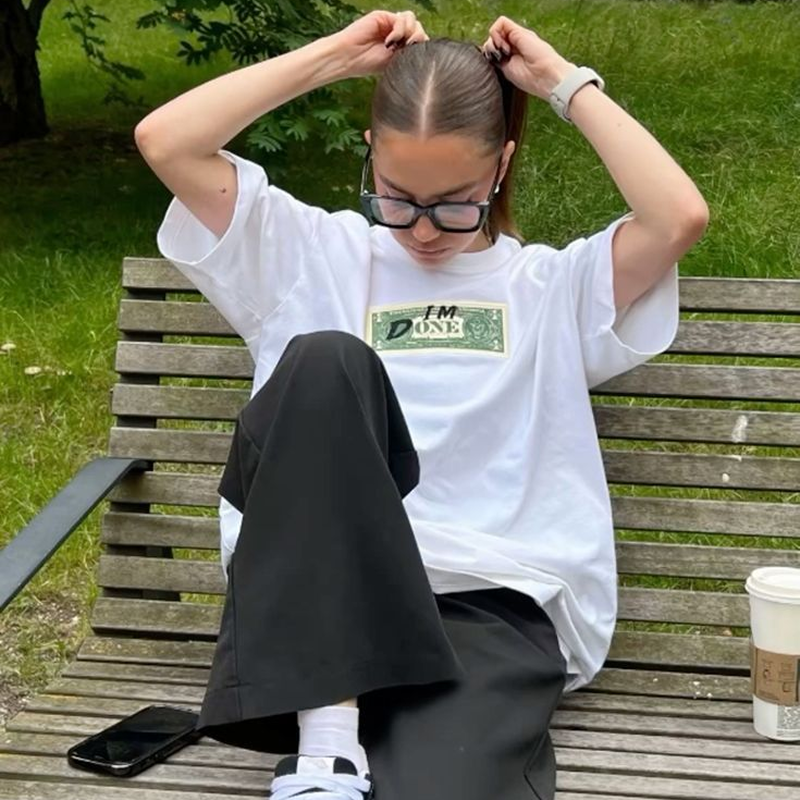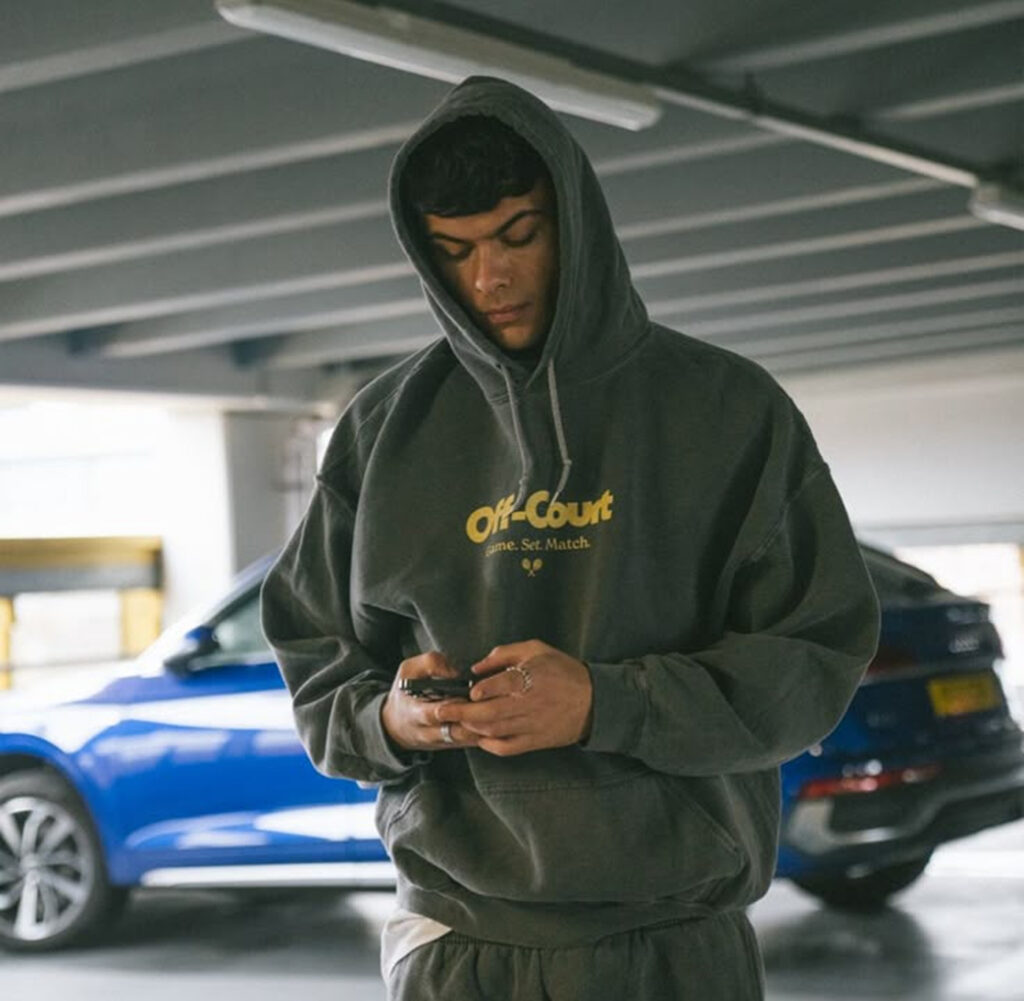- The Era of Fashion as Identity
In 2025, fashion isn’t just about trends — it’s about translation.
Clothing has become a new kind of language, a form of self-expression that transcends words, and nowhere is this more evident than in the world of streetwear.
The humble T-shirt and hoodie — two of the simplest garments in human history — have become the most powerful tools for identity.
They tell stories, declare moods, and express philosophies.
They’re the wearable diary of a generation that values authenticity over aesthetics, emotion over perfection.
In a time when individuality is currency, these pieces are more than just clothes — they’re statements of being.
- The Power of Simplicity
There’s a strange kind of poetry in how something so simple can mean so much.
A plain T-shirt and hoodie can express rebellion, community, nostalgia, or calm — depending on how they’re worn.
In 2025, the world is overwhelmed by noise — endless content, opinions, filters.
Amid all this, simplicity has become radical.
The clean lines of a soft hoodie or the drape of a heavyweight tee now symbolize resistance to overconsumption and digital chaos.
Wearing something plain yet purposeful is the new statement.
It says: I know who I am. I don’t need to shout it.
- From Subculture to Global Language
The story of the T-shirt and hoodie begins in workwear and sportswear, but over the decades, they’ve become global symbols of identity.
In the 1980s, skaters and graffiti artists used them as uniforms of defiance.
In the 1990s, hip-hop culture elevated the oversized tee and hoodie into icons of rhythm and rebellion.
In the 2000s, they evolved into street couture, reshaped by brands and pop stars alike.
By 2020, post-pandemic life turned them into comfort essentials.
And now, in 2025, they represent the ultimate balance between expression and ease — a wearable manifesto of freedom.
No matter where you are in the world, you can understand the “language” of a hoodie and a tee.
They are universal, democratic, and endlessly remixable.
- The Psychology of Self-Expression
What makes these garments so emotionally resonant is how they connect to the self.
Psychologists have long studied how clothing affects mood and identity — and in modern streetwear, that connection is amplified.
When you pull on your favorite hoodie, it’s not just fabric. It’s memory.
It’s the concert you went to, the late-night drive, the rainy Sunday that felt peaceful.
When you slip into a worn-in T-shirt, it carries the echo of every day you’ve lived in it.
In that sense, streetwear becomes autobiographical.
We wear our stories — not to impress others, but to remember who we are.
- Design as Storytelling
Designers in 2025 understand that a T-shirt or hoodie isn’t just a blank canvas — it’s a communication tool.
The details — the cut, the print, the stitching, the weight — all send subtle signals.
Loose fits suggest openness and freedom.
Cropped silhouettes communicate confidence and youth.
Distressed textures evoke authenticity and nostalgia.
Monochrome palettes whisper sophistication and calm.
Every choice is intentional. In a sense, designers are now story editors, helping wearers craft their own narrative through clothes.
- The Return of Personalization
Customization is at the heart of fashion’s next phase.
People no longer want mass-produced uniformity; they crave garments that feel uniquely theirs.
Digital platforms in 2025 allow wearers to co-create — to choose fabrics, colors, embroidery, and graphics before production.
Print-on-demand T-shirts have become a global movement, letting individuals design and order within hours.
What once required a fashion degree can now happen from a smartphone.
The hoodie and T-shirt have become canvases for co-authorship, blurring the line between consumer and creator.
- Layering as Identity Language
Layering is not just about temperature anymore — it’s about tone.
Each layer represents a different facet of personality.
An oversized tee under a cropped hoodie might signal confidence and playfulness.
A muted tee under a structured jacket could express balance and control.
A distressed hoodie over a bright graphic shirt might reveal inner contradictions — rebellion wrapped in introspection.
The way we layer clothes has become a visual dialect — a grammar of individuality.
- Streetwear Archetypes of 2025
Street fashion now operates through archetypes — not strict categories, but emotional blueprints that reflect how people see themselves.
Let’s break down a few of 2025’s most distinctive ones:
8.1. The Minimalist Explorer
Prefers muted palettes and natural fabrics. Lives in sand, stone, and sage tones. Their hoodie drapes like a soft cocoon. Their T-shirt falls perfectly at mid-hip. Comfort = elegance.
8.2. The Retro Dreamer
Mixes vintage graphics with new silhouettes. Think faded band tees, pastel hoodies, baggy jeans, and nostalgic sneakers. Their vibe is 2000s revival with modern restraint.
8.3. The Urban Poet
Loves black and gray, layered asymmetrically. The hoodie hood often up, a hint of mystery. Worn-in tees with subtle prints. This archetype speaks softly but stands out.
8.4. The Creative Nomad
Experimental layering — cropped hoodies, oversized tees, scarves, and techwear accessories. Values movement, spontaneity, and unplanned beauty.
Each archetype reaffirms the same truth: identity isn’t fixed — it’s fluid, wearable, and ever-evolving.
- Genderless Expression
In 2025, gender boundaries in fashion are not just blurred — they’re irrelevant.
T-shirts and hoodies have always been unisex by nature, but now they’re celebrated for it.
Fit charts have been replaced by “flow charts.”
The idea is no longer about fitting into a category but about finding your form of comfort.
A cropped hoodie on a man, an oversized tee on a woman — these choices no longer surprise anyone.
They simply reflect how far fashion has come: from dictating rules to facilitating freedom.
- The Streetwear Palette of Emotion
Fashion psychologists in 2025 often describe clothing color as emotional syntax.
In the language of streetwear, colors don’t just decorate — they express.
White = openness, purity, reset.
Black = confidence, edge, power.
Gray = neutrality, intellect, calm.
Beige and sand = stability, comfort.
Muted green or blue = peace, mindfulness.
Soft pinks or lavender = vulnerability and emotional balance.
Wearing these colors together creates complex emotional sentences — a calm hoodie over a bold tee, for instance, might symbolize harmony between boldness and peace.
- Streetwear and Digital Culture
In the digital age, clothing is no longer confined to the physical body.
Social media, fashion apps, and virtual platforms have turned outfits into content.
But 2025’s approach to digital style is different from the past — it’s authentic-first.
People are moving away from overly curated “fit pics” to real, lived-in aesthetics.
Wrinkles, oversized fits, and mismatched layers are embraced as symbols of humanity in a polished digital world.
The hoodie and T-shirt, in particular, thrive here — their shapes translate effortlessly between pixels and real life.
- The Symbolism of Comfort
Comfort is no longer the opposite of style — it’s the definition of it.
In 2025, people dress not to escape their lives, but to live them better.
Soft fabrics, loose fits, and breathable textures provide physical comfort.
But the emotional comfort of familiarity — that hoodie you’ve had for five years — is what truly connects people to their clothes.
Every wrinkle, every faded thread is proof of life.
And that authenticity is what street fashion in 2025 is built on.
- The Rise of Ethical Identity
Self-expression is not only about how you look, but how your choices impact.
Consumers now see ethical awareness as part of their fashion identity.
Owning a sustainably sourced hoodie or a locally made tee isn’t virtue signaling — it’s self-alignment.
It’s dressing in a way that mirrors your values.
The new luxury is transparency — knowing the story behind what you wear, and wearing that story proudly.
- The Art of Everyday Curation
In 2025, styling is less about trends and more about curation.
People are becoming wardrobe editors — assembling small collections that reflect their mood and purpose.
A capsule of 10–15 tees and 5–6 hoodies can create dozens of combinations.
The goal isn’t variety for its own sake, but versatility.
Through this minimal approach, wearers discover that real creativity often comes from limits — and self-expression blooms from simplicity.
- The Future of Street Identity
The next stage of this evolution lies in fusion — between digital, sustainable, and emotional fashion.
Imagine a hoodie embedded with subtle smart tech that measures mood through body temperature, or a T-shirt designed collaboratively between an AI and its owner.
Identity in 2030 will likely be even more fluid — an intersection of emotion, data, and design.
But the core philosophy will remain: what you wear should feel like you.
- The Eternal Appeal of the T-Shirt and Hoodie
Despite all technological innovation and shifting trends, the T-shirt and hoodie remain timeless because they carry emotional honesty.
They don’t pretend. They don’t demand.
They simply exist — like the person wearing them.
Their simplicity invites reinterpretation; their neutrality allows infinite styling; their comfort makes them universal.
The more fashion evolves, the more these pieces become cultural constants — grounding us amid change.
- Conclusion – Wear Who You Are
Street identity in 2025 isn’t built on exclusivity or status.
It’s built on authentic connection — to self, to community, to the moment.
The T-shirt and hoodie are no longer secondary pieces.
They’re the storytellers of our generation — honest, adaptable, emotional, and free.
You don’t wear them to fit in; you wear them to belong to yourself.
And that’s the most powerful fashion statement of all.



